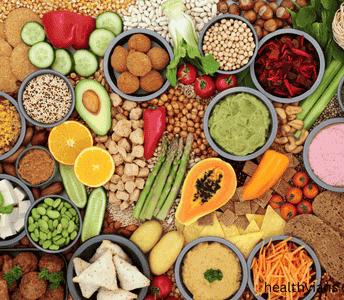Switching to a plant-based lifestyle can feel exciting and overwhelming all at once. Whether you’re doing it for health, animals, or the planet, starting a vegan diet for beginners comes with a lot of questions. What can you eat? What should you steer clear of? Don’t worry — you’re in the right place. This guide breaks it all down in a clear, easy way. No fancy food lingo, just real talk about how to get going without the guesswork.
Table of Contents
What Is a Vegan Diet?
At its core, a vegan diet means cutting out all animal products. This includes meat, dairy, eggs, and even things like honey. Instead, meals focus on plants — vegetables, fruits, grains, legumes, nuts, and seeds.
People choose this way of eating for different reasons:
-
Health: Many find that plant-based meals help with energy, digestion, or heart health.
-
Animals: Choosing not to eat animal products supports animal welfare.
-
Environment: Plant-based diets tend to have a smaller carbon footprint.
Whatever your reason, the basics are the same — no animal products, and lots of plant-based goodness.
What to Eat on a Vegan Diet
Starting your vegan journey? Here’s what your plate should look like most of the time:
1. Vegetables
Load up! Veggies are rich in vitamins, fiber, and flavor. Leafy greens like kale, spinach, and romaine are great, but don’t forget colorful ones like bell peppers, carrots, zucchini, and beets.
2. Fruits
Nature’s dessert! Berries, bananas, apples, oranges, grapes, melons — fresh or frozen, they’re all on the table.
3. Whole Grains
Brown rice, quinoa, oats, barley, and whole wheat bread provide energy and keep you full longer.
4. Legumes
Beans, lentils, chickpeas, and peas are the protein stars of vegan meals. They’re affordable, versatile, and filling.
5. Nuts and Seeds
Almonds, cashews, chia seeds, flaxseeds, sunflower seeds — these offer healthy fats and crunch to your meals.
6. Plant-Based Dairy Alternatives
Swap cow’s milk with almond, oat, soy, or coconut milk. Vegan cheeses and yogurts are also becoming easier to find.
7. Meat Alternatives
Tofu, tempeh, seitan, and store-bought plant-based meat products give you lots of options for meals that feel familiar.
8. Herbs and Spices
Flavor is your friend. Basil, garlic, turmeric, ginger, cumin, and cinnamon turn basic meals into something special.
What to Avoid on a Vegan Diet
The basics: if it comes from an animal, skip it. But here are some items people forget about:
1. Meat
This includes beef, pork, chicken, turkey, and seafood. No animal flesh at all.
2. Dairy
Milk, cheese, butter, cream, yogurt, and anything that contains dairy (like many baked goods).
3. Eggs
Found in a lot of processed foods — watch out for them in pasta, cookies, and sauces.
4. Honey
Yes, even honey comes from bees, so it’s off the menu.
5. Gelatin
Made from animal bones and used in gummies, marshmallows, and Jell-O.
6. Whey and Casein
These are dairy proteins often found in protein bars, shakes, or processed snacks.
7. Lard and Tallow
Animal fats used in frying or baking in some packaged goods and restaurant items.
8. Non-Vegan Additives
Look out for ingredients like carmine (made from insects), shellac (used in shiny candy), and certain food colorings.
Smart Vegan Grocery Shopping Tips
Shopping for a vegan diet for beginners doesn’t mean buying only expensive organic goods. Here’s how to keep it simple and budget-friendly:
-
Stick to the basics: rice, beans, canned tomatoes, frozen veggies
-
Buy in bulk: grains, oats, and lentils are cheaper in larger quantities
-
Try store brands: many offer affordable vegan items
-
Read labels: keep an eye out for hidden animal products
-
Visit local farmers’ markets for fresh produce
Easy Vegan Meal Ideas for Beginners
Not sure where to start? These simple meals are perfect for your first week:
| Meal Time | Ideas |
|---|---|
| Breakfast | Overnight oats with almond milk and fruit, peanut butter toast, tofu scramble |
| Lunch | Lentil soup, veggie wrap with hummus, chickpea salad sandwich |
| Dinner | Stir-fried veggies with rice, spaghetti with marinara, black bean tacos |
| Snacks | Popcorn, fruit smoothies, trail mix, hummus with veggies |
Common Mistakes to Avoid as a New Vegan
-
Skipping protein: You need protein to stay full and energized. Don’t forget beans, tofu, and lentils.
-
Not eating enough: Plants have fewer calories, so you might need bigger portions.
-
Relying on processed foods: Vegan junk food exists — chips, fake meats, and sweets. Eat whole foods more often.
-
Being too hard on yourself: If you mess up, it’s okay. Just keep going.
Frequently Asked Questions
1. Can I get enough protein on a vegan diet?
Yes! Beans, lentils, tofu, tempeh, quinoa, and even broccoli have plenty of protein.
2. What about vitamin B12?
You’ll need a supplement or fortified foods since B12 isn’t found in plants.
3. Is it okay to eat out on a vegan diet?
Absolutely. Many restaurants have vegan options now. Just ask your server or check online menus first.
4. Will I lose weight on a vegan diet?
Many people do, especially if they focus on whole foods and skip processed ones. But results vary based on lifestyle.
5. Can kids follow a vegan diet?
Yes, with the right planning. Kids need enough calories, fats, and nutrients, so make sure meals are balanced.
6. What should I do if I crave meat or cheese?
Try plant-based versions or boost your meals with stronger flavors and textures. Cravings fade with time.
Conclusion
Starting a vegan diet for beginners doesn’t mean turning your whole world upside down. It just means making small swaps, learning new habits, and being open to trying fresh foods. Focus on real, simple ingredients and listen to your body. If you mess up, no big deal — just keep moving forward. You’ve got this!






